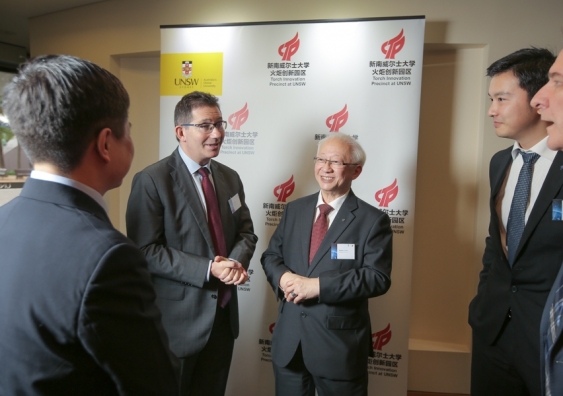Last April, in the Great Hall of the People in Beijing, before the leaders of both China and Australia, UNSW Sydney signed contracts to host the first-ever Torch science and technology park outside China, potentially worth more than $100 million in new research funding for the university via partnerships with Chinese companies and industries.
To mark the first anniversary of that event UNSW has hosted a celebratory lunch on campus for Chinese companies accompanying Chinese Premier Li Keqiang on his Australian visit.
In his welcoming address, UNSW President and Vice-Chancellor, Professor Ian Jacobs, highlighted the importance of the Chinese and Australian collaboration and announced a further $15.5 million in investments.
“The Torch Innovation Precinct is an important showcase for Chinese and Australian collaboration that aims to bring industry, SMEs, entrepreneurs, investors and policy makers from Australia, China and beyond, together,” he said.
“China’s Torch Program currently services more than 50,000 Chinese companies and Phase One of our Torch partnership already has more than $50 million in its active pipeline with the prospect of doubling that in the next 18 months”.
Professor Jacobs noted that in the past year, UNSW had established a Torch incubator laboratory; conducted a successful Torch Innovation Week at UNSW; and positioned itself for fresh opportunities in Phase Two, where Chinese investment in UNSW research is expected to grow to $100 million plus.
“Today, I’m delighted to announce further developments on this road to success including;
- $9.5 million partnership with the Yixing Environmental Protection High Technology Industry Development Zone, focusing on environmental protection and sustainability; and
- a $6 million partnership signed with HMJ – Hebei Ming Jing Investments – a Sino-Singaporean joint venture focused on high-end biomedical technology.
“These are truly exciting developments that will see incredible investment in UNSW’s water research and School of Medical Sciences and will ultimately benefit both nations,” Professor Jacobs said.
“By accelerating our research efforts in Sydney and rapidly scaling them up with development and production opportunities in China and then out to global markets, we are establishing a formidable partnership – and a model for many more innovative Australian-Chinese collaborations to come.”


